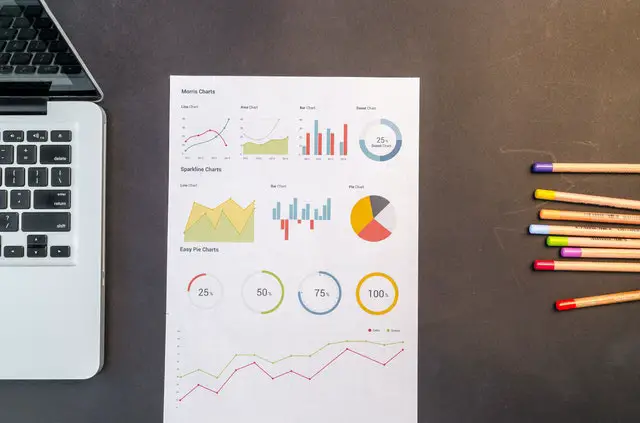Here are some great trading statistics researched by Rolf of Tradeciety and Austin Silver.
Here are 40 statistics and data on traders that you may have never heard about.[1]
- 80% of all day traders quit within the first two years.
- Among all day traders, nearly 40% day trade for only one month. Within three years, only 13% continue to day trade. After five years, only 7% continue.
- Traders sell winners at a 50% higher rate than losers. 60% of sales are winners, while 40% of sales are losers.
- The average individual investor underperforms a market index by 1.5% per year. Active traders underperform by 6.5% annually.
- Day traders with strong past performance go on to earn strong returns in the future. However, only approximately 1% of all day traders are able to profit net of fees.
- Traders with up to a 10 years negative track record continue to trade. This suggests that day traders even continue to trade when they receive negative confirmation regarding their ability to be profitable.
- Profitable day traders make up a small proportion of all traders: 1.6% in the average year. However, these day traders are very active – accounting for 12% of all day trading activity.
- Among all traders, profitable traders increase their trading activity more than unprofitable day traders.
- Low income individuals tend to spend a greater proportion of their income on lottery ticket purchases and their demand for lottery tickets increases with a decline in their income. This is the same cycle new traders tend to get into making big bets with the odds against them with the hopes of a big win that makes them a lot of money.
- Investors with a large variance between their existing personal finances and net worth and their desire for wealth hold riskier stocks in their portfolios.
- Men tend to trade more than most women. And unmarried men trade more than married men on average.
- Within each income group sample size, gamblers underperform non-gamblers. A system with an edge beats randomness and high risk.
- Traders and investors tend to sell winning trades/investments while holding on to their losing investments hoping to get back out even or with a small profit.
- Trading in Taiwan dropped by about 25% when a lottery was introduced in April 2002.
- During periods of time with very high large lottery jackpots, individual investor and trading activity declines.
- Investors are more likely to repurchase a stock that they previously sold for a profit than one previously sold for a loss.
- An increase in search frequency of a specific stock or cryptocurrency predicts higher returns in the following two weeks in most cases.
- Traders are more active when their most recent trades were winners.
- New traders rarely learn about trading before they begin buying and selling in the markets. Most new traders don’t believe they can learn much from experienced traders, books, or courses and their ego has then start putting money at risk with only their opinions and predictions to guide them. They choose randomness over education and research.
- The average day trader loses money by a considerable margin after adjusting for transaction costs.
- In Taiwan the losses of individual investors are about 2% of GDP.
- Investors and traders overweight stocks in the industry in which they are employed.
- Traders with a high-IQ tend to hold more mutual funds and a larger number of stocks. Therefore, benefit more from diversification effects by spreading out risks and having more opportunities for picking big winners.
- Funded traders tend to lose their accounts within three weeks of starting.[2]
- 60% of traders don’t use a stop loss and have a high risk of ruin.[3]
- Prop traders that have made it to their fourth pay cycle have a risk management strategy.
- Profitable prop traders tend to spend approximately four hours or less a day in the market.
- The most profitable prop traders don’t hold trades overnight.
- Prop traders who holds traders over the weekend have a 60% greater chance of a loss.
- When markets are more volatile most traders lose due to a lack of risk management.
- If market volatility is prolonged most traders lose a lot of money.
- Profitable traders trade conservatively and make sure they get paid with profits. They no when to lock in profits and stop when their goals are reached on a trade or in a time period.
- Most traders that achieve the largest gains and biggest profits also are the ones that usually blow up their whole account later.
- Approximately only one in seven online traders are female. [4]
- Day traders account for around 12% of all trading volume.
- Less than 5% of traders live in a major financial city.
- Millennials account for 58% of all online traders.
- 90% of day traders lose 90% of their capital within 90 days.
- Traders who trade with a higher reward-to-risk ratio are more successful.
- Trading education and market knowledge improves a day trader’s performance.
What is the key learning from these statistics? Investing and trading are a professional business and should be treated as such. In the real world businesses, banks, and casinos make money by taking the smart risks and high probability bets with their capital and why would investing and trading be any different? The big risk takers, gamblers, and unprepared lose money in any venture and the markets are the same. If you are serious about making money in the most competitive markets in the world you better have done your homework, designed a system with an edge, manage risk, and stay disciplined or quickly become just another statistic.
Is day trading profitable? Is forex trading profitable? It depends on whether you have an edge or not.
